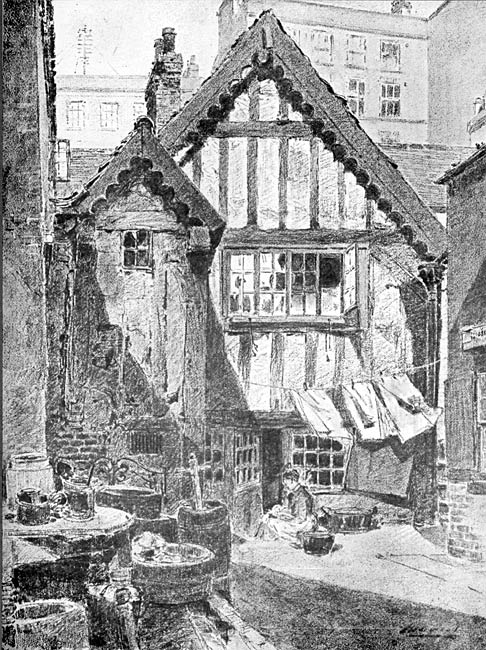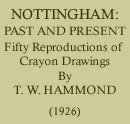< Previous | Contents | Next >
NOTTINGHAM PAST & PRESENT: NOTED BUILDINGS
THE MARSH FARM, 1887

Nottingham is fortunate in possessing one or two examples of half-timbered dwellings from which it is possible to mentally reconstruct the appearance of the mediaeval town. This well-known house in Byron Yard, Narrow Marsh—although in a very decrepit condition—is, with its beautifully moulded barge boards, a fine example of this type of building. It is of fifteenth century construction, probably about the date of the Wars of the Roses; and although it is called a farm house there is little reason for associating it with agricultural pursuits : it is a typical better class house of the period. It is interesting to notice that its lower story is half underground, showing how much the ground level has risen owing to the deposit of debris during centuries. It stands in the middle of a rather interesting area, and not far away was the King's Head Inn which about the year 1727, was a rendezvous of Dick Turpin with his Nottingham agent Coney and his lady friend the notorious 'Martha'.
This neighbourhood was frequented by the tanners of the town for the pursuit of their malodorous calling. When the plague visited Nottingham in the middle of the seventeenth century it was thought that tne smells of the tan pits acted as a disinfectant; at any rate the disease was not so severe in this district as in other parts of the town and this led to many people buying or renting lodgings in the neighbourhood in order to escape the dread visitation.
